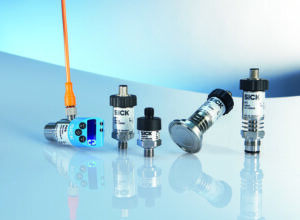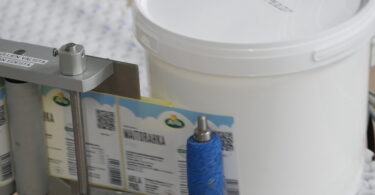 Pressure measurement plays a central role in many applications—from machine tooling to process engineering to manufacturing and processing food and beverages. Sometimes the process temperature in these applications exceeds the limits of pressure instrumentation, which can make it difficult to accurately monitor, measure, and control pressure.
Pressure measurement plays a central role in many applications—from machine tooling to process engineering to manufacturing and processing food and beverages. Sometimes the process temperature in these applications exceeds the limits of pressure instrumentation, which can make it difficult to accurately monitor, measure, and control pressure.
The trick is to ensure that the process is cooled before reaching the pressure measuring device. There are generally two different methods used to protect the pressure transmitter and/or the pressure switch from high temperatures: cooling elements and standoff piping. Provided below are guidelines on how to protect the pressure devices from extreme temperatures using these two methods.
Cooling Elements
 A cooling element is an accessory that puts some distance between the transmitter and the heat of the process.
A cooling element is an accessory that puts some distance between the transmitter and the heat of the process.
Cooling elements are a great way to protect the transmitter from high temperature processes, acting as a heat sink, which cools the process before it reaches the transmitter. Cooling elements can extend the maximum process temperature of pressure transmitters from 185 °F (85 °C) up to 392 °F (200 °C).
Standoff Piping
Using standoff piping (otherwise known as impulse lines) cools the process before it comes in contact with the pressure transmitter. Standoff piping may also allow the user to relocate the transmitter to a more convenient location for maintenance.
Impulse line lengths are calculated using a general rule of thumb. For every 100 °F that the temperature needs to drop, users need to have 1 foot of impulse lines. For instance the maximum process temperature specification of the PBS pressure transmitter, switch, and display is 185 ° F (85 °C).
If the process temperature is 585 °F, the process would have to be cooled 400 °F to be within the transmitter specification (585 – 185 = 400). Where 585 is the process temperature in °F, 180 is the maximum process temperature of the PBS, and 400 is the decrease in the temperate required for the transmitter.
Dropping the process temperature by 400 °F is easily done using a minimum of 4 feet of impulse lines. This is a general rule of thumb, assuming a 68 °F (20 °C) ambient temperature. For higher ambient temperatures, longer impulse lines are required. For lower ambient temperatures, shorter impulse lines are required. Also, most users add a little more pipe length for added peace of mind.
Conclusion
Cooling elements and standoff piping are two proven methods used to protect the pressure transmitter and/or the pressure switch from high temperatures. Some of the time, a combination of both methods is used to give the engineer added peace of mind. By using either method, a standard pressure transmitter and/or pressure switch may be used in high temperature applications.
For more detailed guidelines and example applications, read the full whitepaper: Guidelines for Mounting Pressure Transmitters and Switches When Process Temperature Exceeds Published Limits





